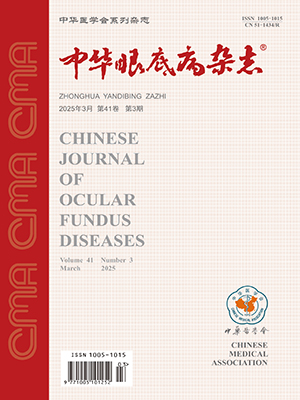Objective To investigate the effect of apoptosis-related gene p53 on the apoptosis of retinal capillary cells in rats with spontaneously hypertensive (SHR) after ischemic reperfusion injury. Methods A total of 60 SHR rats were randomly divided into sham group (SHR-SH) and retinal ischemic reperfusion group (SHRRIR), which were subdivided into 5 subgroups according to the time after RIR: 2, 6, 24, and 72 hours and 7 days, with 6 rats in each subgroup. Another 60 Wistar-Kyoto (WKY) rats were divided into the same groups as the SHR rats as the control. The RIR model was set up. The apoptosis of retinal capillary cells was detected by terminal deoxynucleotidyl transferasemediated dUTP nick end labeling (TUNEL) methods and the expression of p53 was determined by streptavidin-perosidase (SP) immunohistochemistry. Results The apoptosis rate of retinal capillary cells in the 5 SHRRIR groups was (8.64 plusmn;0.56)%, (14.92 plusmn;0.99)%, (24.72 plusmn;2.98)%, (16.53 plusmn;1.80)%, and (7.12 plusmn;1.10)%, respectively. The expression of p53 in SHRRIR groups increased at the 2nd hour after RIR, reached the peak at the 24th hour, kept the high level at the 72nd hour, and remained a little at the 7th day, which was significantly different from which in the SHRSH groups (P lt;0.01). The expression of p53 were higher in SHR-IR groups than that in the WKY-RIR groups (P lt;0.01). Conclusions p53 may play a part in RIR injury by inducing or promoting apoptosis. The apoptosis of retinal capillary cells after RIR is more severe under the hypertension, and reaches the peak at the 24 hour after RIR.
Citation: 王赛斌,姬斌,陈碧新,张明英,黄晓燕,杨德业. Apoptosis of retinal capillary cells and expression of p53 in rats with spontaneous hypertension after ischemic reperfusion injury. Chinese Journal of Ocular Fundus Diseases, 2009, 25(3): 198-201. doi: Copy
Copyright © the editorial department of Chinese Journal of Ocular Fundus Diseases of West China Medical Publisher. All rights reserved




